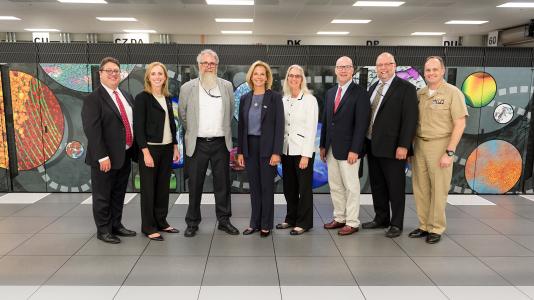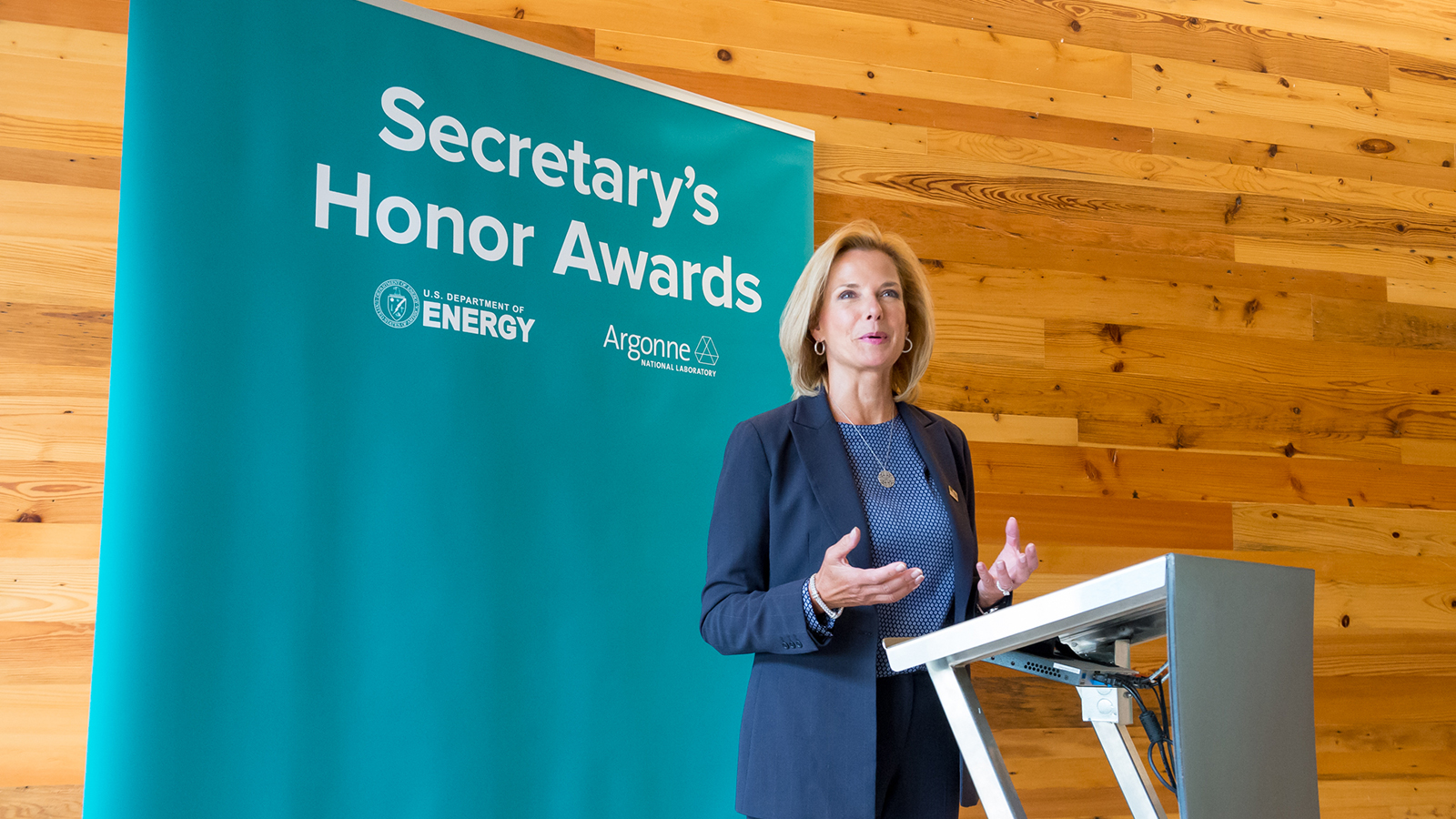Argonne welcomes DOE Under Secretary for Nuclear Security

The Under Secretary got a first-hand look at the laboratory’s national security contributions in one of many visits by DOE leadership to Argonne since the start of the year.
“Argonne’s spectrum of expertise and world-leading research and development facilities enable us to make unique contributions to the NNSA mission,” said Argonne Laboratory Director Paul Kearns. “We thank the Under Secretary for the opportunity to introduce her to our talented scientists and engineers working to secure our nation.”
“Argonne helps advance our national security work and we appreciate all the hard work being done there.” — Lisa E. Gordon-Hagerty, DOE Under Secretary for Nuclear Security and Administrator of the NNSA
Argonne plays an essential role in delivering on DOE’s mission of protecting the nation from adversaries who create, or aspire to create, weapons of mass destruction.
“As part of the Department of Energy’s unparalleled constellation of national laboratories, Argonne helps advance our national security work and we appreciate all the hard work the being done there,” said Administrator Gordon-Hagerty. “The scientists and engineers at Argonne play a critical role in the Nuclear Security Enterprise and advancing important NNSA missions like nuclear nonproliferation.”
Keith Bradley, director of National Security Programs at Argonne, and the Under Secretary discussed Argonne’s work in nuclear nonproliferation, stockpile stewardship and emergency response. Argonne supports the NNSA with science and engineering expertise, research and development and technical support for policy decisions. This includes converting nuclear research reactors worldwide from using highly enriched uranium fuel to low-enriched uranium fuel instead. It also includes supporting NNSA’s participation in multilateral export control arrangements such as the Nuclear Suppliers Group and the Australia Group.
Kearns and Gordon-Hagerty toured Argonne’s facilities that support those projects, including:
- The Advanced Photon Source, a DOE Office of Science User Facility and one of the most powerful X-ray sources in the world, which is used for a multitude of basic and applied research.
- The Argonne Leadership Computing Facility, a DOE Office of Science User Facility and future home of Aurora, set to be the nation’s first exascale system. Aurora is being developed by Intel in partnership with Cray to be five times faster than the nation’s current most powerful supercomputer.
- The Pyroprocessing Technologies Facility, where research and development activities enable the transition from the once-through to a closed nuclear fuel cycle designed for sustainable nuclear energy systems.
- The molybdenum-99 (Mo-99) Technology Development Facility, which aims to develop secure alternatives for producing Mo-99, a key isotope for medical use.
Gordon-Hagerty also saw equipment used in the DOE’s Radiological Assistance Program (RAP). RAP is a nation-wide DOE radiological emergency response program, providing support to NNSA and the U.S Department of Homeland Security. Argonne serves as the base for one of the eight RAP Regional Coordinating Offices in the United States.
“Since Argonne’s inception in 1946, scientists and researchers here have been protecting the world against nuclear threats,” said Bradley. “Today we go beyond the nuclear threat to include radiological, chemical, biological and cyber threats, all of which are addressed here at the lab.”
Gordon-Hagerty also met with members of Argonne’s reactor conversion team, who were just honored with the Secretary of Energy Achievement Award for their role in converting the Ghana Miniature Neutron Source Reactor to use low-enriched uranium.
Established by Congress in 2000, the National Nuclear Security Administration (NNSA) is a semi-autonomous agency within the U.S. Department of Energy responsible for enhancing national security through the military application of nuclear science. NNSA maintains and enhances the safety, security, and effectiveness of the U.S. nuclear weapons stockpile without nuclear explosive testing; works to reduce the global danger from weapons of mass destruction; provides the U.S. Navy with safe and effective nuclear propulsion; and responds to nuclear and radiological emergencies in the U.S. and abroad. Visit energy.gov/nnsa for more information.
Argonne National Laboratory seeks solutions to pressing national problems in science and technology by conducting leading-edge basic and applied research in virtually every scientific discipline. Argonne is managed by UChicago Argonne, LLC for the U.S. Department of Energy’s Office of Science.
The U.S. Department of Energy’s Office of Science is the single largest supporter of basic research in the physical sciences in the United States and is working to address some of the most pressing challenges of our time. For more information, visit https://energy.gov/science.
